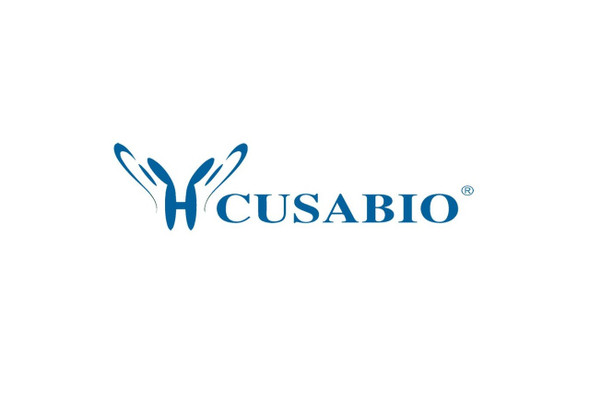Cusabio Human Recombinants
Recombinant Human Transcription cofactor vestigial-like protein 3 (VGLL3) | CSB-YP025850HU
- SKU:
- CSB-YP025850HU
- Availability:
- 25 - 35 Working Days
Description
Recombinant Human Transcription cofactor vestigial-like protein 3 (VGLL3) | CSB-YP025850HU | Cusabio
Alternative Name(s): VGLL3; Transcription cofactor vestigial-like protein 3; Vgl-3
Gene Names: VGLL3
Research Areas: Transcription
Organism: Homo sapiens (Human)
AA Sequence: MSCAEVMYHPQPYGASQYLPNPMAATTCPTAYYQPAPQPGQQKKLAVFSKMQDSLEVTLPSKQEEEDEEEEEEEKDQPAEMEYLNSRCVLFTYFQGDIGSVVDEHFSRALGQAITLHPESAISKSKMGLTPLWRDSSALSSQRNSFPTSFWTSSYQPPPAPCLGGVHPDFQVTGPPGTFSAADPSPWPGHNLHQTGPAPPPAVSESWPYPLTSQVSPSYSHMHDVYMRHHHPHAHMHHRHRHHHHHHHPPAGSALDPSYGPLLMPSVHAARIPAPQCDITKTEPTTVTSATSAWAGAFHGTVDIVPSVGFDTGWSAMARS
Source: Yeast
Tag Info: N-terminal 6xHis-tagged
Expression Region: 1-320aa
Sequence Info: Full Length of Isoform 2
MW: 37.2 kDa
Purity: Greater than 90% as determined by SDS-PAGE.
Relevance: May act as a specific coactivator for the mammalian TEFs.
Reference: The DNA sequence, annotation and analysis of human chromosome 3.Muzny D.M., Scherer S.E., Kaul R., Wang J., Yu J., Sudbrak R., Buhay C.J., Chen R., Cree A., Ding Y., Dugan-Rocha S., Gill R., Gunaratne P., Harris R.A., Hawes A.C., Hernandez J., Hodgson A.V., Hume J. , Jackson A., Khan Z.M., Kovar-Smith C., Lewis L.R., Lozado R.J., Metzker M.L., Milosavljevic A., Miner G.R., Morgan M.B., Nazareth L.V., Scott G., Sodergren E., Song X.-Z., Steffen D., Wei S., Wheeler D.A., Wright M.W., Worley K.C., Yuan Y., Zhang Z., Adams C.Q., Ansari-Lari M.A., Ayele M., Brown M.J., Chen G., Chen Z., Clendenning J., Clerc-Blankenburg K.P., Chen R., Chen Z., Davis C., Delgado O., Dinh H.H., Dong W., Draper H., Ernst S., Fu G., Gonzalez-Garay M.L., Garcia D.K., Gillett W., Gu J., Hao B., Haugen E., Havlak P., He X., Hennig S., Hu S., Huang W., Jackson L.R., Jacob L.S., Kelly S.H., Kube M., Levy R., Li Z., Liu B., Liu J., Liu W., Lu J., Maheshwari M., Nguyen B.-V., Okwuonu G.O., Palmeiri A., Pasternak S., Perez L.M., Phelps K.A., Plopper F.J., Qiang B., Raymond C., Rodriguez R., Saenphimmachak C., Santibanez J., Shen H., Shen Y., Subramanian S., Tabor P.E., Verduzco D., Waldron L., Wang J., Wang J., Wang Q., Williams G.A., Wong G.K.-S., Yao Z., Zhang J., Zhang X., Zhao G., Zhou J., Zhou Y., Nelson D., Lehrach H., Reinhardt R., Naylor S.L., Yang H., Olson M., Weinstock G., Gibbs R.A.Nature 440:1194-1198(2006)
Storage: The shelf life is related to many factors, storage state, buffer ingredients, storage temperature and the stability of the protein itself. Generally, the shelf life of liquid form is 6 months at -20?/-80?. The shelf life of lyophilized form is 12 months at -20?/-80?.
Notes: Repeated freezing and thawing is not recommended. Store working aliquots at 4? for up to one week.
Function: May act as a specific coactivator for the mammalian TEFs.
Involvement in disease:
Subcellular Location: Nucleus
Protein Families: Vestigial family
Tissue Specificity: Enriched in placenta.
Paythway:
Form: Liquid or Lyophilized powder
Buffer: If the delivery form is liquid, the default storage buffer is Tris/PBS-based buffer, 5%-50% glycerol. If the delivery form is lyophilized powder, the buffer before lyophilization is Tris/PBS-based buffer, 6% Trehalose, pH 8.0.
Reconstitution: We recommend that this vial be briefly centrifuged prior to opening to bring the contents to the bottom. Please reconstitute protein in deionized sterile water to a concentration of 0.1-1.0 mg/mL.We recommend to add 5-50% of glycerol (final concentration) and aliquot for long-term storage at -20?/-80?. Our default final concentration of glycerol is 50%. Customers could use it as reference.
Uniprot ID: A8MV65
HGNC Database Link: HGNC
UniGene Database Link: UniGene
KEGG Database Link: KEGG
STRING Database Link: STRING
OMIM Database Link: OMIM









